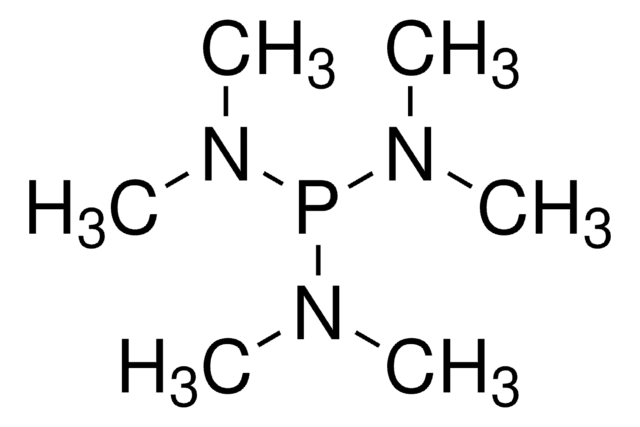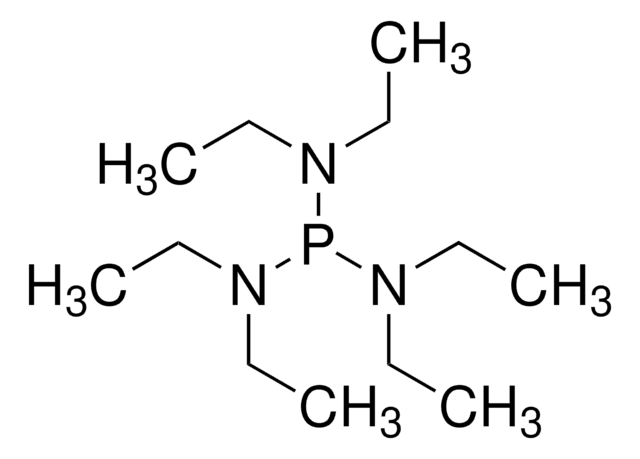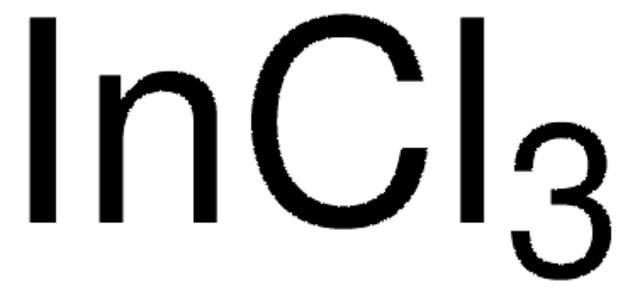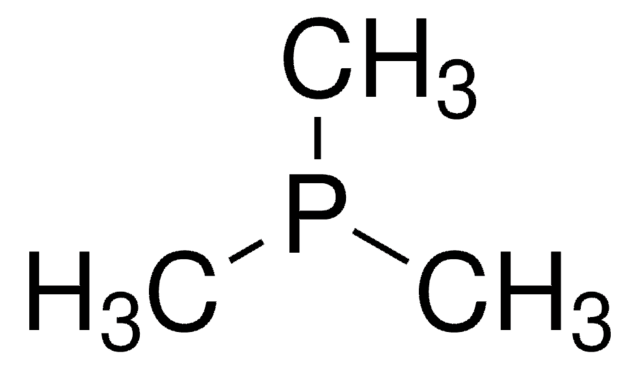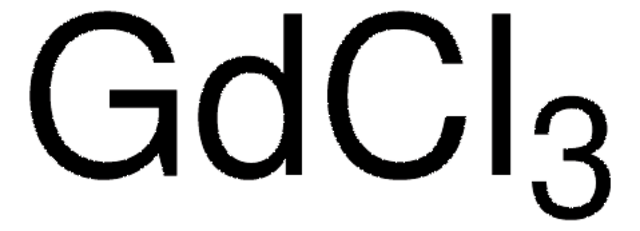439770
Gadolinium(III) chloride
anhydrous, powder, 99.99% trace metals basis
Synonym(s):
Gadolinium trichloride
About This Item
Recommended Products
grade
anhydrous
Quality Level
Assay
99.99% trace metals basis
form
powder
reaction suitability
reagent type: catalyst
core: gadolinium
impurities
≤150.0 ppm Trace Rare Earth Analysis
SMILES string
Cl[Gd](Cl)Cl
InChI
1S/3ClH.Gd/h3*1H;/q;;;+3/p-3
InChI key
MEANOSLIBWSCIT-UHFFFAOYSA-K
Looking for similar products? Visit Product Comparison Guide
Related Categories
General description
Application
- As a precursor to synthesize Gd metal nanoparticles.
- As a dopant to prepare CdSe nanoparticles as a contrast agent for optical and magnetic resonance imaging applications.
- To prepare Gd-Hematoporphyrin monomethyl ether(HMME) phosphors for oxygen sensing.
- To fabricate radioluminescent silica optical fibers via surface plasma chemical vapor deposition (SPCVD), for magneto-optical devices.
accessory
Signal Word
Warning
Hazard Statements
Precautionary Statements
Hazard Classifications
Skin Irrit. 2
Storage Class Code
13 - Non Combustible Solids
WGK
WGK 3
Flash Point(F)
Not applicable
Flash Point(C)
Not applicable
Personal Protective Equipment
Regulatory Listings
Regulatory Listings are mainly provided for chemical products. Only limited information can be provided here for non-chemical products. No entry means none of the components are listed. It is the user’s obligation to ensure the safe and legal use of the product.
JAN Code
439770-5G-PW:
439770-25G-PW:
439770-25G:
439770-BULK:
439770-5G:
439770-VAR:
Choose from one of the most recent versions:
Already Own This Product?
Find documentation for the products that you have recently purchased in the Document Library.
Our team of scientists has experience in all areas of research including Life Science, Material Science, Chemical Synthesis, Chromatography, Analytical and many others.
Contact Technical Service
